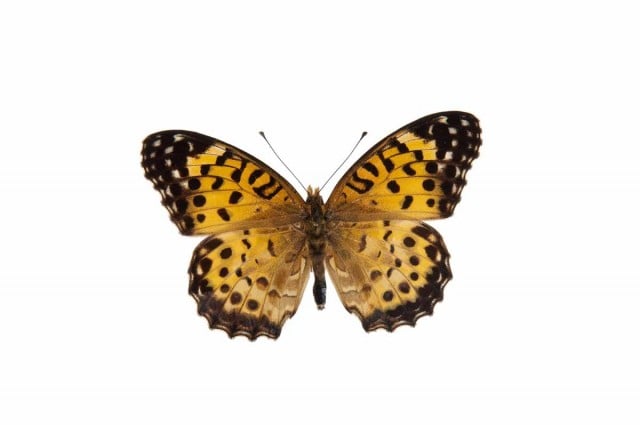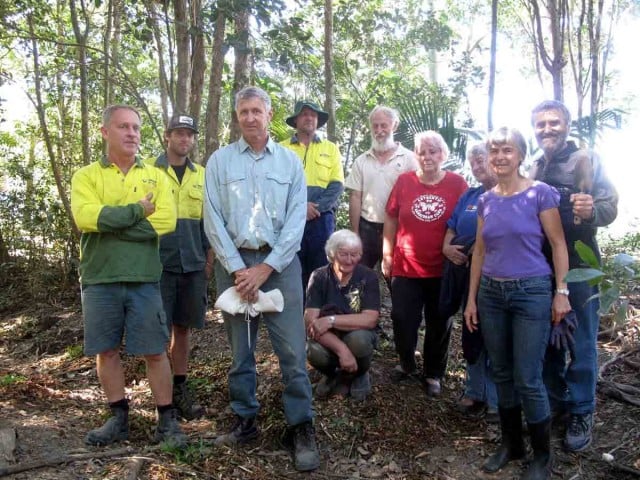
Food plants for two locally threatened butterfly species were recently planted at a park between Murwillumbah and Tweed Heads in the hope that the rare Australian Fritillary butterfly is not extinct in the wild.
The plantings were undertaken to commemorate this year’s National Threatened Species Day (7 September), the day in 1936 that the last known living Thylacine (Tasmanian Tiger) died in captivity at Hobart Zoo.
Representatives from Earth Learning Inc, Murwillumbah Community Garden and Tweed Shire Council joined the effort to help the Australian Fritillary and Richmond Birdwing butterflies out at Bruce Chick Park near Stotts Island.
Over 100 specimens of the Arrowhead Violet (Viola bentonicifolia), the only food plant of the endangered Australian Fritillary butterfly (Argyreus hyperbius), were planted.
‘The Australian Fritillary reproduces by laying eggs on the Arrowhead Violet, which was last recorded in the Tweed at Condong in January 1982. A recent search failed to find the plant in this locality,’ Council’s bushland officer, John Turnbull, said.
‘The Australian Fritillary is endangered in NSW and there is some thought that it may be extinct in the wild,’ Mr Turnbull said.
‘It was last collected near Port Macquarie in 2001, with an additional sighting from Bribie Island in southeast Queensland around the same time.
‘There was fresh hope in early June this year near Bora Ridge in the Richmond Valley, where many clumps of native Arrowhead Violets were found growing in a swamp sclerophyll wetland understorey.
Area surveyed
‘This area will be further surveyed for the butterfly’s presence over spring and summer,’ he said.
The group also planted 20 Pararistolochia praevenosa vines, a feed species for the Richmond Birdwing Butterfly, which is vulnerable in Queensland.
‘A lot of planning went into choosing the site,’ Mr Turnbull said.
The site was chosen as potentially suitable habitat for these species due to its location on the floodplain and its proximity to Stotts Island Nature Reserve, which contains Swamp Sclerophyll forest, the preferred habitat of the Arrowhead Violet, and lowland subtropical rainforest that can support Pararistolochia vines.

A previous planting of vines at this site has been successful and the additional plantings are designed to ensure that enough leaf area is produced to support Birdwing caterpillars, which are particularly voracious.
Planting of the Arrowhead Violet is seen as a first step in re-establishing the species in the Tweed and as a way of supporting a possible reintroduction of the butterfly.
‘To protect itself from predation by birds, the Australian Fritillary mimics the Swamp Tiger Butterfly (Danaus affinis) which is poisonous and feeds on the vine Coastal Cyanchum (Cyanchum carnosum) in coastal saline swamps,’ Mr Turnbull said.
‘For best protection from birds, the Fritillary needs to live in freshwater wetlands that contain Arrowhead Violet near saline swamps that contain Coastal Cyanchum,’ he said.
Earth Learning members produced many of the violets, in conjunction with Council’s gardener tradesperson, Greg Newland.
‘In his own time, Greg is a lepidopterist (butterfly expert) and he was also able to provide cultivation advice for the successful establishment of the vines,’ Mr Turnbull said.




Is it possible for Byron Council to access this plant so the community can plant same in wetland areas in Byron.?